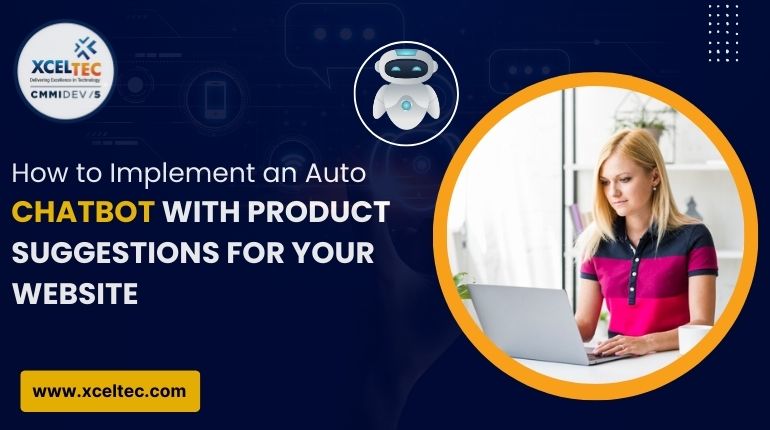In the successful world of e-commerce, connecting visitors and providing unique shopping experiences are crucial. An effective way to achieve this is by integrating an auto-chatbot that not only interacts with customers but also provides tailored product suggestions. This blog will guide you through the steps to implement chatbot app development that can improve the user experience and maybe boost your sales.
Why You Need an Auto Chatbot with Product Suggestions
Before we dive into the technical details, let’s understand why an auto chatbot is a valuable addition to your website:
- 24/7 Availability: Chatbots can assist customers at any time of the day, ensuring your store is always open for business.
- Personalized Experience: By analyzing user data, chatbots can recommend products that are likely to interest each visitor.
- Increased Engagement: Chatbots can initiate discussions and keep visitors engaged, reducing bounce rates.
- Efficiency: They handle multiple customer interactions together, providing quick responses and improving user satisfaction.
Step-by-Step Guide to Implementing Your Chatbot
1. Define Your Goals and Use Cases
Start by defining what you want to achieve with your chatbot. Are you looking to provide customer support, guide users through the shopping process, or promote products? Clearly stating your goals will shape the functionality of your chatbot.
2. Choose the Right Platform
There are several chatbot platforms available, each with its own set of features. Some popular options include:
Dialogflow is Google’s chatbot building platform, ideal for those who want to leverage Google’s machine learning capabilities.
Botpress: is an open-source platform that offers extensive customization.
ManyChat: is focused on integrating with social media platforms like Facebook. Choose a platform that connects with your technical expertise and the specific needs of your website.
3. Design Your Chatbot’s Flow
Map out the discussion moves, including regards, FAQs, and product suggestion logic. A well-designed flow ensures a smooth user experience. Here are some key components to consider:
Welcome Message: Greet users warmly and introduce your chatbot’s capabilities.
User Queries: Define how the bot will handle common questions and requests.
Product Recommendations: Decide how the bot will present product suggestions based on user inputs or browsing behavior.
4. Integrate Product Recommendation Logic
To suggest products effectively, your chatbot needs access to your product database. Here’s a basic approach:
Collect User Data: collect information like browsing history, previous purchases, and preferences.
Analyze behavior: Use this data to identify patterns and predict user interests.
Suggest Products: Implement methods that match user data with relevant products. For example, if a user often browses electronics, your chatbot app service can suggest the latest devices and deals in that category.
5. Build and Train Your Chatbot
Using your chosen platform, start building your chatbot. Train it to understand user inputs and respond effectively. For example:
Intent Recognition: Teach your bot to recognize different user intents, like “I need a new laptop” or “Show me discounts.”
Entity Extraction: Enable it to identify and extract specific information, such as product names or price ranges.
6. Test and Optimize
Before going live, actually test your chatbot to ensure it functions correctly. Test it with various scenarios to check for bugs and areas for improvement. Gather feedback and make the necessary adjustments.
7. Launch and Monitor
Once you’re satisfied with the testing phase, launch your chatbot on your website. Monitor its performance using analytics tools to track user engagement, satisfaction, and conversion rates. Regularly update and refine your chatbot to keep it effective and relevant.
Best Practices for a Successful Chatbot Implementation
Keep It Simple: Don’t control users with too many options. Keep interactions easy to navigate.
Provide Value: Ensure your chatbot adds value by offering useful information and personalized suggestions.
Continuously Improve: Use user feedback and data analytics to improve your chatbot’s performance.
How XcelTec can help you implement it on your website:
XcelTec, a leading chatbot app development company. Implementing an auto-chatbot with product suggestions can mostly improve your website’s user experience and increase sales. By following these steps, you can create a chatbot that not only engages visitors but also helps them find the products they desire. Start today and watch your e-commerce site succeed!
Get in touch with us for more!
Contact us at: +91 987 979 9459 | +1-980 428 9909
Email us at:- sales@xceltec.com
Visit our website: https://www.xceltec.com/



 :
:









